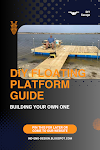Exploring the Varied Types of Trusses in Structural Engineering
Trusses are essential structural components commonly used in buildings, bridges, and various other engineering structures. They consist of interconnected elements arranged in triangular configurations to efficiently distribute loads and resist forces. Trusses offer versatility, strength, and lightweight construction, making them indispensable in modern engineering. Let's delve into the diverse types of trusses and their applications across different fields.
1. King Post Truss:
The king post truss is one of the simplest and oldest truss designs, consisting of a vertical central post (king post) supporting inclined rafters extending to either side. Diagonal members called struts connect the rafters to the base of the king post, forming triangular configurations. King post trusses are commonly used in small structures such as residential roofs, pavilions, and bridges.
2. Queen Post Truss:
Similar to the king post truss, the queen post truss features two vertical posts (queen posts) instead of a single central post. The queen posts are positioned equidistant from the center, supporting the rafters. This design allows for longer spans and increased load-bearing capacity compared to the king post truss. Queen post trusses find applications in larger residential roofs, barns, and light industrial buildings.
3. Howe Truss:
The Howe truss is characterized by its distinctive diagonal members sloping downwards towards the center, intersecting with vertical members. This design provides excellent strength and stability, making Howe trusses suitable for medium to long-span structures such as bridges, warehouses, and commercial buildings. Howe trusses are also utilized in roof framing systems where clear spans are required.
4. Pratt Truss:
In a Pratt truss, the diagonal members slope upwards towards the center, intersecting with vertical members. This configuration allows for efficient load transfer, particularly in structures requiring longer spans and higher load capacities. Pratt trusses are widely used in bridges, industrial buildings, and roof systems where economy and simplicity of construction are essential.
5. Warren Truss:
The Warren truss features a series of equilateral triangles formed by diagonal and vertical members. This design is lightweight, economical, and easy to fabricate, making Warren trusses suitable for a wide range of applications including bridges, roofs, and transmission towers. The simplicity and efficiency of Warren trusses have contributed to their widespread use in various engineering projects.
6. Fink Truss:The Fink truss is a popular choice for residential and light commercial construction due to its simple yet effective design. It consists of alternating diagonal and vertical members forming a zigzag pattern. Fink trusses are versatile, offering flexibility in span lengths and load capacities. They are commonly used in residential roofs, agricultural buildings, and small bridges.
7. Scissor Truss:Scissor trusses are designed with a unique configuration where the bottom chords slope upwards towards the center, resembling an open pair of scissors. This design allows for increased ceiling height and architectural aesthetics in buildings such as churches, auditoriums, and residential homes. Scissor trusses provide ample space for vaulted ceilings while maintaining structural integrity.
In conclusion, trusses play a vital role in modern structural engineering, offering efficient solutions for spanning distances and supporting loads. By understanding the characteristics and applications of different types of trusses, engineers can select the most appropriate design for specific project requirements, ensuring structural stability, durability, and cost-effectiveness. Whether it's a simple residential roof or a complex bridge spanning a river, trusses continue to shape the landscape of architectural and civil engineering projects worldwide.










0 Comments